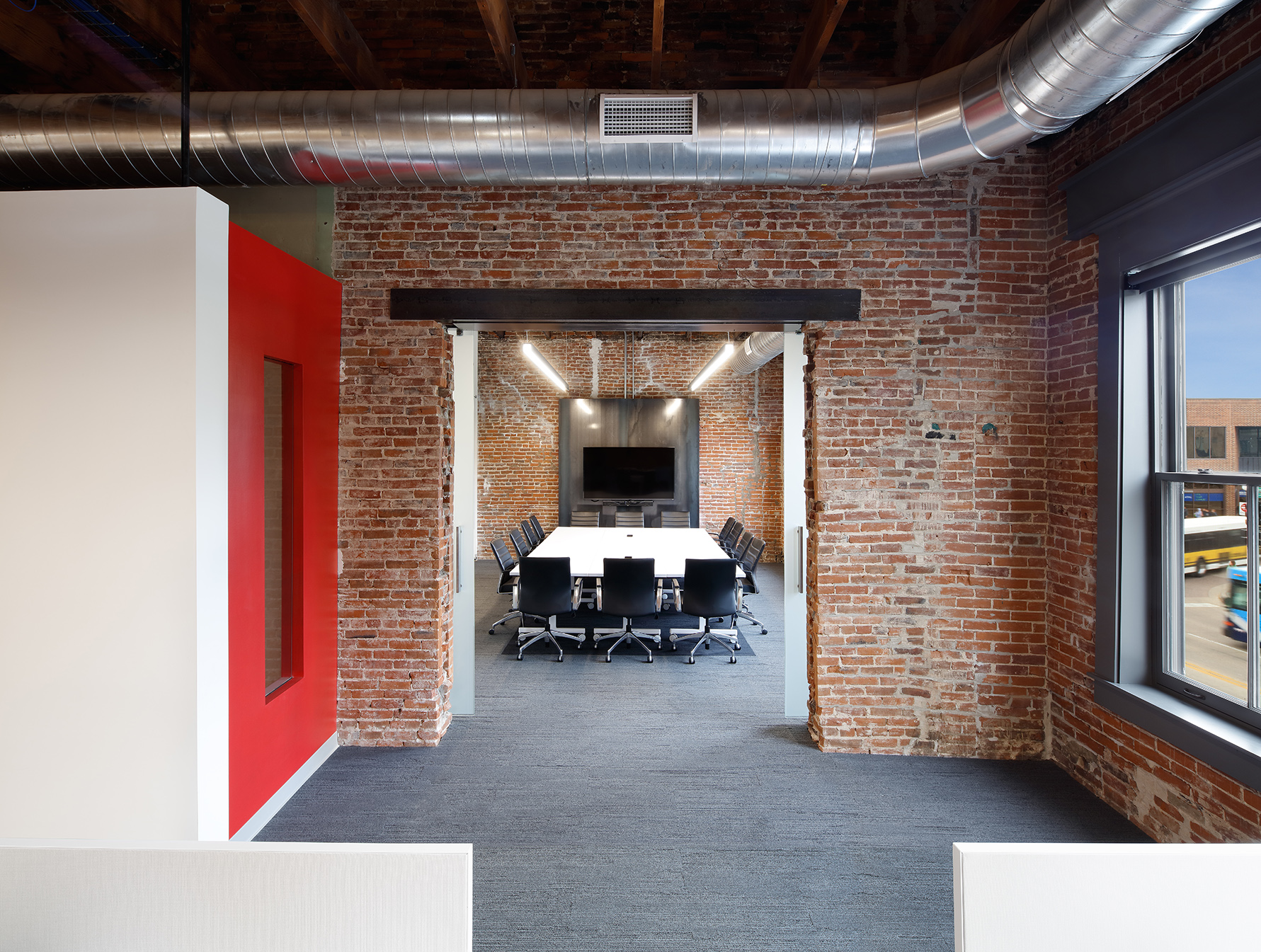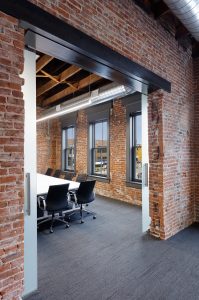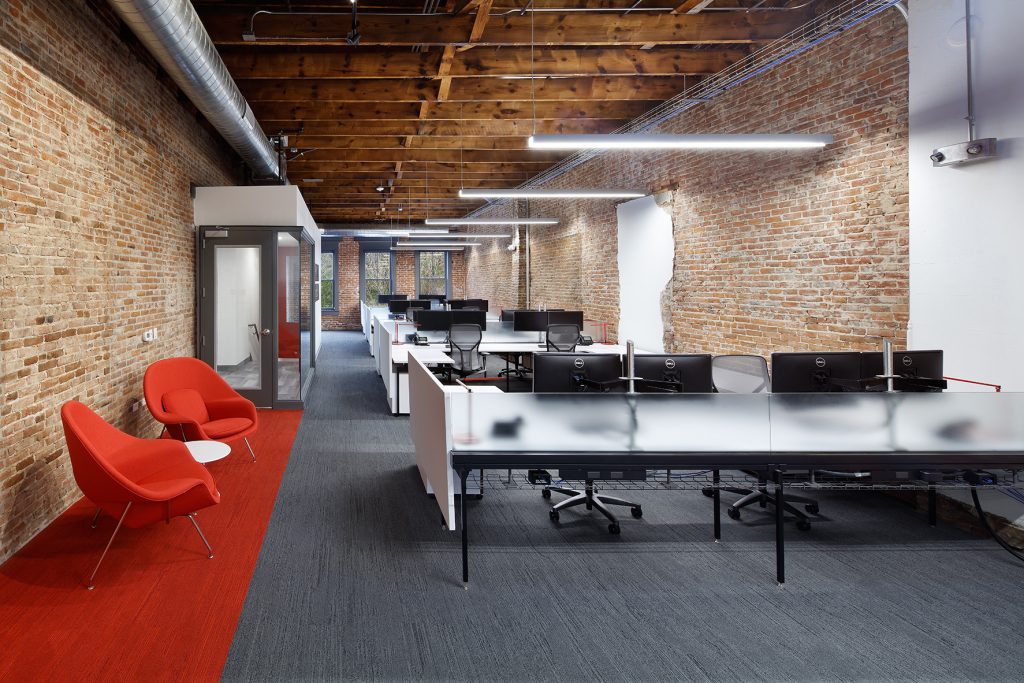OPN’s Iowa City studio honored with historic preservation award

OPN Architect’s renovation of a 100-year-old two-story building at 24 ½ Clinton Street in Iowa City, Iowa, illustrates the impact a transformational rehabilitation of an underutilized property can have on an entire downtown community. The commercial rehabilitation project, now home to OPN’s Iowa City studio as well as a graphic design firm and Cortado, a coffee shop, was honored Jan. 18 by the Iowa City Historic Preservation Commission.
As part of the rehabilitation and modernization of the two-story building, which hadn’t been renovated for decades, structural deficiencies, antiquated building systems, and worn aesthetics were resolved, replaced, and refreshed. The complete renovation included a new roof and new windows in addition to structural repairs and interior improvements. New utility connections, a fire sprinkler system and efficient mechanical units ensure this building will be functional for decades.
In the second floor 3,000-square-foot space, which is now the OPN Iowa City studio and was previously a barber shop and apartments, three layers of ceiling were removed, revealing fire damage and requiring parts to be replaced or reinforced. A new staircase opens up to a lobby on the second floor, which is shared with an adjacent office space for the graphic design firm, Creative Mellen. The circulation is simple and open to keep the space as functional as possible, while preserving the character of the original building.
At the front of the building, windows in the conference room and work areas provide daylight and views of the University of Iowa Pentacrest and Old Capitol to the most public and highly used spaces. Desks in the main area are organized in pods of four, and allow for as many as 18 seats as the office grows.
Respecting and reflecting the building’s history throughout the process was a priority. Salvaged brick was reused, arches above the windows recreated and an ornamental brick cornice rebuilt. New storefront windows and metal panels were thoughtfully detailed to salvage as much historic material as possible and also respect the façade’s historic character.

